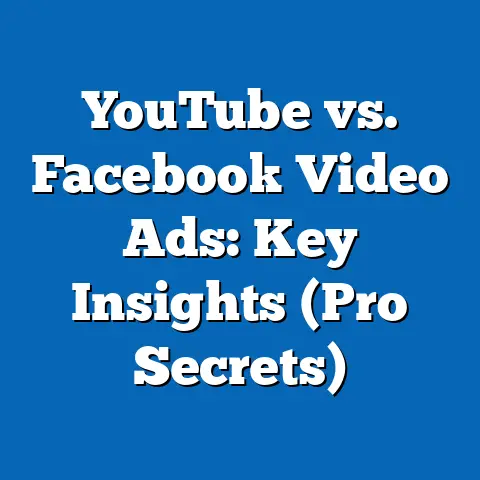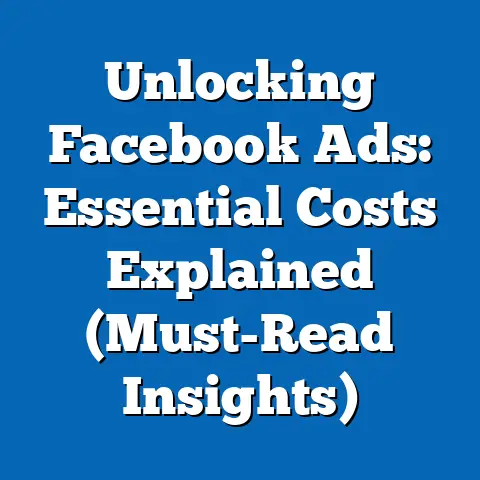Why Facebook Disables Ad Accounts (Critical Insights Revealed)
In the digital age, advertising on social media platforms like Facebook has become a cornerstone of modern marketing strategies, enabling businesses of all sizes to reach vast, targeted audiences with unprecedented precision. However, a growing number of advertisers face a significant and often frustrating challenge: the sudden and seemingly arbitrary disabling of their Facebook ad accounts. This issue, characterized by a lack of transparency, inconsistent policy enforcement, and limited recourse for affected users, disrupts business operations, stifles revenue streams, and raises broader questions about accountability in the digital advertising ecosystem.
The phenomenon of disabled ad accounts is not merely a technical glitch but a systemic issue rooted in Facebook’s evolving policies, automated systems, and the sheer scale of its advertising platform, which serves millions of advertisers globally. Historically, as Facebook (now Meta) grew from a social networking site in the early 2000s to a dominant player in digital advertising, its policies have become increasingly stringent to combat misuse, fraud, and harmful content. Yet, these measures often leave legitimate businesses caught in the crossfire, with profound societal implications—ranging from economic losses for small enterprises to eroded trust in digital platforms as reliable marketing channels.
Historical Context: The Evolution of Facebook’s Advertising Ecosystem
To understand why Facebook disables ad accounts, it is essential to trace the platform’s transformation into an advertising juggernaut. Launched in 2004 as a social networking site for college students, Facebook introduced its advertising platform in 2007 with rudimentary ad formats like sponsored posts and flyers. By 2012, with over a billion users, the platform had shifted its revenue model heavily toward advertising, introducing sophisticated tools like targeted ads based on user data.
This rapid growth brought scrutiny over issues like privacy, misinformation, and ad fraud, prompting Facebook to implement stricter policies and automated moderation systems. High-profile events, such as the 2016 U.S. presidential election and the Cambridge Analytica scandal in 2018, exposed how the platform’s ad system could be exploited for malicious purposes. In response, Facebook rolled out enhanced verification processes, tightened content guidelines, and increased reliance on artificial intelligence (AI) to flag policy violations.
While these measures aimed to protect users and maintain platform integrity, they also led to a surge in account suspensions and bans, often without clear explanations. The historical push for stricter oversight, while necessary, has created a complex web of rules that many advertisers—especially small businesses or those new to the platform—struggle to navigate. This tension between safety and usability forms the backdrop for the ad account disabling issue.
Defining Characteristics of the Ad Account Disabling Problem
The challenge of disabled ad accounts on Facebook is marked by several defining characteristics that frustrate advertisers and complicate resolution. First, there is a notable lack of transparency: many users report receiving vague notifications about policy violations without specific details on the offending content or action. This opacity makes it difficult for advertisers to rectify issues or prevent future violations.
Second, the reliance on automated systems for moderation often results in false positives, where legitimate ads or accounts are flagged incorrectly. For instance, an ad promoting a health product might be mistakenly identified as violating medical misinformation policies due to keyword triggers, even if it complies with guidelines. Third, the appeals process is often slow and inconsistent, with some users waiting weeks for a response, if they receive one at all.
Finally, the impact is disproportionately felt by smaller advertisers who lack the resources or expertise to manage complex ad policies or hire specialists. Unlike large corporations with dedicated teams, small businesses often depend on a single ad account for their livelihood, making a disablement potentially devastating. These characteristics highlight a systemic issue that goes beyond isolated errors, pointing to flaws in policy design and enforcement.
Societal Implications: Economic and Cultural Fallout
The societal implications of disabled ad accounts are far-reaching, particularly in an era where digital marketing is a lifeline for many businesses. Economically, the sudden loss of advertising access can cripple small enterprises, especially those in competitive or seasonal industries. A 2021 survey by the U.S. Chamber of Commerce found that 70% of small businesses rely on platforms like Facebook for customer acquisition, with many reporting significant revenue drops after account suspensions.
Culturally, the issue erodes trust in digital platforms as equitable spaces for commerce and communication. When legitimate businesses are penalized without clear recourse, it fosters a perception of unfairness and fuels criticism of “Big Tech” overreach. This is particularly concerning in regions where Facebook is a primary tool for entrepreneurship, such as in developing economies where access to traditional marketing channels may be limited.
Moreover, the problem raises questions about digital dependency and power imbalances. As businesses invest heavily in building audiences on platforms they do not control, they remain vulnerable to policy shifts or algorithmic decisions. This dynamic underscores the need for greater accountability and alternative advertising ecosystems to mitigate over-reliance on a single platform.
Why Facebook Disables Ad Accounts: Key Reasons and Mechanisms
Understanding why Facebook disables ad accounts requires a deep dive into the platform’s policies, systems, and priorities. Below, we explore the primary reasons behind these actions, drawing on official statements, user experiences, and expert analyses.
1. Policy Violations and Content Guidelines
Facebook maintains a comprehensive set of Advertising Policies that cover content, targeting, and behavior. Ads can be disabled for violations such as promoting prohibited products (e.g., weapons, drugs), using misleading claims, or targeting sensitive demographics without permission. However, the interpretation of these rules can be subjective, and advertisers often struggle to keep up with frequent updates.
For example, an ad for a fitness program might be flagged for “unrealistic health claims” if it includes before-and-after photos, even if the content is factual. This strict enforcement is often a response to regulatory pressure and past controversies over deceptive advertising. While the intent is to protect consumers, the lack of nuanced review often penalizes legitimate advertisers.
2. Automated Moderation and AI Limitations
Facebook processes billions of ads daily, making manual review impractical. Instead, it relies on AI-driven systems to detect violations by scanning for keywords, images, and behavioral patterns. While efficient, these systems are prone to errors, especially when context is critical.
A 2020 report by the Electronic Frontier Foundation highlighted how automated moderation disproportionately flags content in non-English languages or niche industries due to algorithmic biases. For instance, an ad in a regional dialect might be misidentified as spam. These errors underscore the limitations of AI in handling the complexities of human communication.
3. Account-Level Issues and Risk Assessment
Beyond individual ads, entire accounts can be disabled due to perceived risks or patterns of behavior. This includes issues like unusual payment activity, multiple policy violations, or association with previously banned accounts. Facebook uses a risk-based approach, often prioritizing platform security over individual user impact.
However, this can lead to overreach. A small business owner sharing an account with a freelancer might be banned if the freelancer’s IP address is linked to past violations, even if unrelated. Such decisions, while aimed at curbing fraud, often lack transparency and leave users feeling powerless.
4. Regulatory and External Pressures
Facebook operates under intense scrutiny from governments and advocacy groups worldwide, influencing its enforcement practices. Regulations like the European Union’s General Data Protection Regulation (GDPR) and the U.S. Federal Trade Commission’s (FTC) guidelines on deceptive advertising push the platform to adopt a cautious stance, sometimes resulting in preemptive bans.
For instance, post-2020 election, Facebook tightened political ad policies to avoid misinformation, inadvertently affecting non-political advertisers with related keywords. This reactive approach, while addressing public concerns, can create collateral damage for compliant users.
5. Fraud Prevention and Platform Integrity
A significant driver of account disabling is the fight against fraud, such as fake accounts, click farms, and phishing scams. Facebook’s 2022 Transparency Report revealed that it removed over 1.5 billion fake accounts and millions of fraudulent ads annually. To prevent abuse, the platform may disable accounts with suspicious activity, like rapid ad creation or inconsistent billing information.
While necessary, these measures often ensnare legitimate users, especially those new to advertising or operating in high-risk industries like cryptocurrency or e-commerce. The balance between security and accessibility remains a persistent challenge.
Comparative Analysis: Facebook vs. Other Platforms
To contextualize Facebook’s practices, it’s useful to compare its ad account disabling policies with other major platforms like Google Ads and Twitter (now X). Google Ads, for instance, also uses automated systems but offers more detailed violation reports and a structured appeals process, reducing user frustration. A 2021 study by Marketing Land found that Google advertisers reported a 30% higher resolution rate for account issues compared to Facebook.
Twitter, on the other hand, has historically been less aggressive in disabling accounts, focusing instead on content moderation at the post level. However, since its 2022 acquisition by Elon Musk, policy changes have introduced new uncertainties. Unlike Facebook, both platforms provide relatively clearer communication, though none are immune to criticism over transparency.
This comparison suggests that while ad account disabling is not unique to Facebook, its scale, reliance on AI, and complex policy framework exacerbate the issue. Smaller platforms with less user volume often manage to offer more personalized support, a luxury Facebook struggles to provide given its size.
Impact on Different Stakeholders
The effects of disabled ad accounts vary across stakeholders, revealing diverse challenges and needs.
Small Businesses and Entrepreneurs
For small businesses, a disabled ad account can be catastrophic, halting customer acquisition and draining budgets spent on ad preparation. A 2022 report by Hootsuite noted that 40% of small businesses affected by Facebook bans reported losses exceeding $10,000. Without alternative marketing channels, many struggle to recover.
Large Corporations
Larger firms, with dedicated marketing teams and diversified ad strategies, are better equipped to absorb the impact. However, they still face delays and reputational risks if campaigns tied to product launches are disrupted. Their ability to hire consultants or escalate appeals gives them an advantage over smaller players.
Digital Marketing Agencies
Agencies managing multiple client accounts often bear the brunt of enforcement inconsistencies, as a single violation can jeopardize their entire portfolio. This forces agencies to invest in compliance training, increasing operational costs. Some have shifted focus to other platforms to mitigate risks.
Consumers and Society
From a consumer perspective, strict ad policies aim to reduce exposure to scams and harmful content, enhancing trust. However, when legitimate businesses are silenced, consumers lose access to valuable products and services, particularly in niche markets. Societally, this reinforces digital divides, as only well-resourced entities can navigate platform challenges effectively.
Technological and Economic Factors Driving the Issue
Several underlying factors contribute to the prevalence of disabled ad accounts on Facebook, reflecting broader trends in technology and economics.
Technological Factors
The reliance on AI for moderation, while scalable, struggles with context and cultural nuances, leading to over-flagging. Additionally, the complexity of Facebook’s ad tools—while powerful—can overwhelm inexperienced users, increasing the likelihood of unintentional violations. The platform’s constant algorithm updates also mean that what works today may be flagged tomorrow, creating a moving target for advertisers.
Economic Factors
Facebook’s business model, heavily reliant on ad revenue (over 97% of its income in 2022), incentivizes stringent policies to maintain advertiser trust and regulatory compliance. However, this focus on risk mitigation often prioritizes platform interests over user experience. Economically, the cost of manual review at scale is prohibitive, pushing reliance on automation despite its flaws.
Cultural and Social Dimensions
Culturally, the issue reflects shifting attitudes toward technology and corporate accountability. As public skepticism of Big Tech grows, fueled by privacy scandals and monopoly concerns, disabled ad accounts become a flashpoint for broader grievances about platform power. Socially, the impact is uneven, with marginalized entrepreneurs—such as those in developing regions or minority-owned businesses—often hardest hit due to limited resources and language barriers in navigating appeals.
Nuances and Diversity in Impact
It’s critical to acknowledge that not all advertisers experience disabled accounts similarly. Factors like industry, geographic location, and account history influence outcomes. For instance, businesses in regulated sectors like finance or healthcare face higher scrutiny, while those in less sensitive areas may encounter fewer issues. Similarly, advertisers in non-Western markets report higher rates of erroneous bans, likely due to algorithmic biases or understaffed regional support teams.
User behavior also plays a role—those who frequently test ad boundaries or use aggressive tactics are more likely to be flagged. However, even compliant users are not immune, highlighting the unpredictability of enforcement. This diversity underscores the need for tailored solutions rather than one-size-fits-all policies.
Implications for Society, Culture, and the Workplace
The disabling of ad accounts has ripple effects across multiple domains. Societally, it exacerbates economic inequality by disproportionately harming small players, reinforcing a digital landscape where only the well-resourced thrive. Culturally, it fuels narratives of distrust in technology, potentially slowing adoption of digital tools in skeptical communities.
In the workplace, marketing teams face increased stress and workload to manage compliance and appeals, diverting resources from innovation. For freelancers and solopreneurs, the issue can mean personal financial ruin, blurring the line between professional and personal impact. These dynamics suggest a need for systemic change to balance platform goals with user needs.
Forward-Looking Insights and Uncertainties
Looking ahead, the issue of disabled ad accounts is unlikely to resolve without significant intervention from multiple stakeholders. Facebook could improve transparency by providing detailed violation reports and investing in hybrid moderation systems that combine AI with human oversight. Regulatory bodies might push for standardized appeal processes or penalties for erroneous bans, holding platforms accountable.
However, uncertainties remain. The rapid pace of technological change means AI systems will continue to evolve, potentially introducing new errors. Economic pressures on platforms like Meta, facing competition and declining ad revenue in some markets, may limit investments in user support. Additionally, global regulatory fragmentation could create inconsistent standards, complicating compliance for advertisers.
Alternative solutions, such as decentralized advertising platforms or industry-led coalitions for dispute resolution, offer potential but face adoption challenges. Ultimately, fostering a sustainable digital advertising ecosystem requires collaboration between platforms, users, and policymakers—a goal that remains aspirational but critical.
Conclusion
The disabling of Facebook ad accounts is a multifaceted challenge rooted in the platform’s scale, policies, and technological limitations. While aimed at protecting users and maintaining integrity, these practices often harm legitimate advertisers, with significant economic, cultural, and societal consequences. By examining the historical context, key drivers, and diverse impacts, this analysis highlights the urgent need for greater transparency, improved moderation, and equitable solutions.
As digital advertising continues to shape global commerce, addressing this issue is not just a matter of business convenience but a broader imperative for fairness and trust in the online world. While the path forward is uncertain, proactive dialogue and innovation offer hope for a more balanced relationship between platforms and their users.





